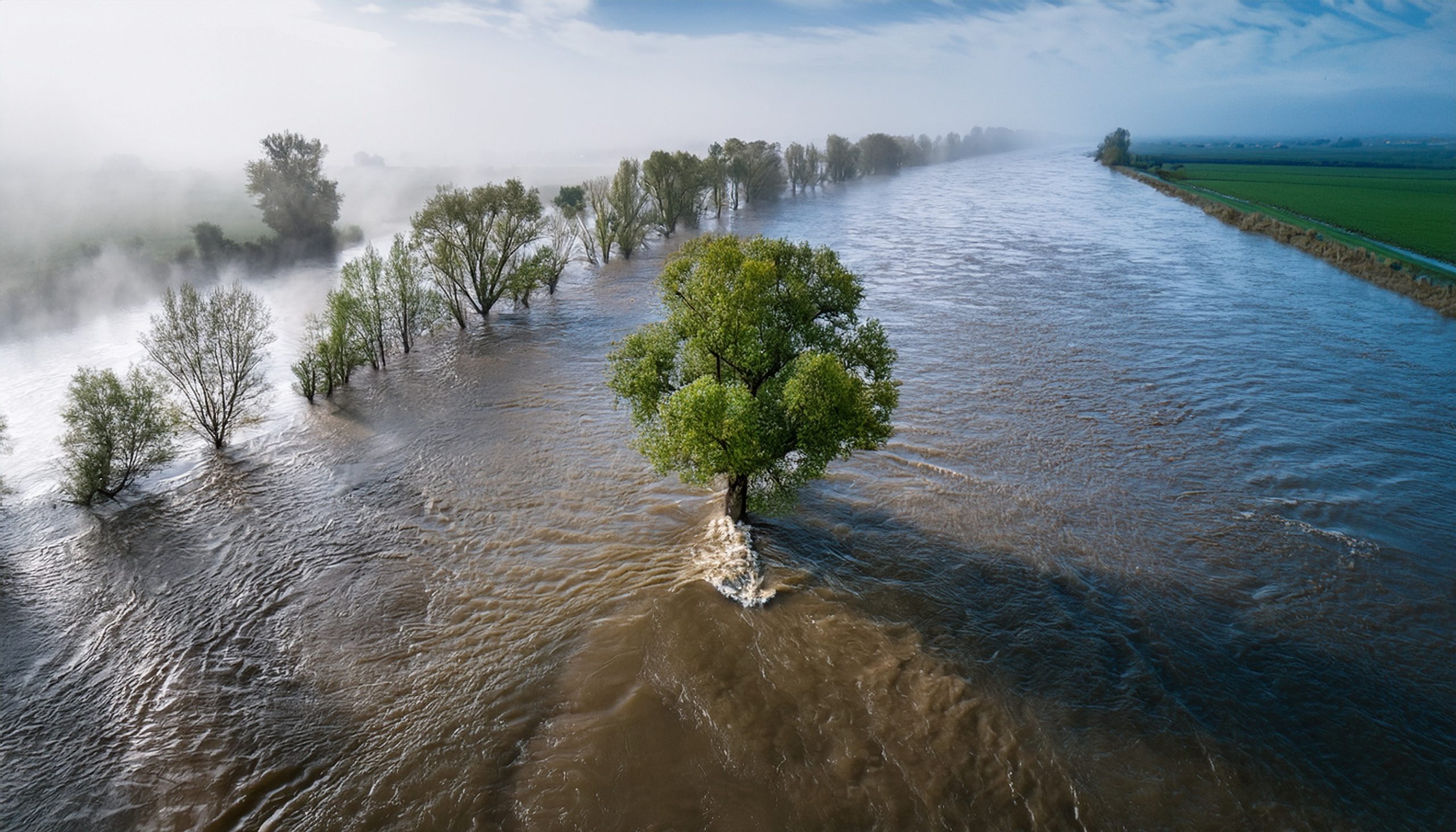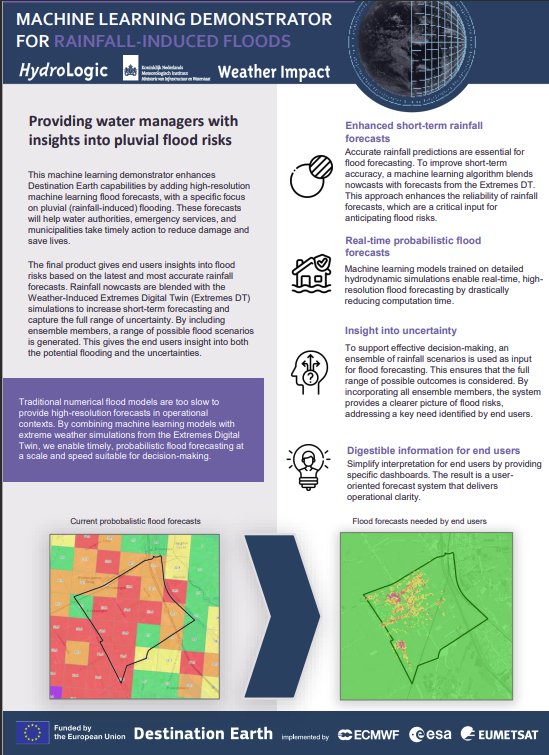
Machine Learning Demonstrator for rainfall-induced floods
Providing accurate flooding information.
Main contractor: HydroLogic (Netherlands)
What is it? Using DestinE Weather-Induced Extremes Digital Twin (Extremes DT) precipitation data, impact-based precipitation post-processing, hydrological models and advanced machine learning (ML) techniques to provide accurate flooding information. This pilot service is a joint effort by HydroLogic and its partners, the national meteorological service of the Netherlands (KNMI) and Weather Impact.
Concrete applications examples: This approach will provide accurate data faster and cheaper than traditional forecasts, supporting national authorities in their efforts to respond to flood events. The demonstrator will also allow to explore what-if scenarios based on the Climate Change Adaptation Digital Twin simulations.
Main target end users: Decision-makers in the civil protection responsible for flood risk management in the Netherlands.
Factsheet: Click the photo below to view the full PDF factsheet on the Machine Learning Demonstrator for rainfall-induced floods
Supporting decision-making with faster, more accurate flood data
The Royal Netherlands Meteorological Institute (KNMI) and Weather Impact, a Dutch company specialised in weather and climate service for a changing climate, complete the contract team led by HydroLogic. HydroLogic and Weather Impact are behind the W2O community, a community of practice gathering disaster risk authorities, water authorities and municipalities in the Netherlands since 2019 to tackle flood management issues. The W2O community will contribute to the co-development of the ML demonstrator helping ensure it meets the requirements of the user community.
Flooding is one of the most common and destructive natural disasters. In 2024, storms and flooding in Europe affected an estimated 413,000 people, resulting in the loss of at least 335 lives. Damage from storms and flooding across Europe during the year is estimated to have cost at least €18 billion, according to the Copernicus Climate Change Service. Timely predictions in evacuation, protection and early warning are critical in case of flood threats.

At the heart of the pilot service is a ML-based flood prediction model designed to predict the likelihood and extent of flooding caused by forecasted heavy rainfall. The model will rely on the data generated by a complementary ML model blending operational national nowcasts and forecasts with DestinE Extremes DT forecasts. This approach will allow to produce precise rainfall forecasts at short to medium lead times, supporting water management, decision-makers and civil protection. The two models will create a seamless pipeline from rainfall forecasting to flood prediction supporting the national authorities on early warnings and proactive measures, and therefore help mitigate the potential impacts of flooding. The trained flood prediction models will also be tested on climate projections from the DestinE Climate DT, notably storyline simulations for selected events. This will demonstrate the potential of the approach for understanding increasing impacts of extreme events in a future climate.

In addition to the study areas in the Netherlands, two international pilot areas have been selected—one in South Africa and one in New Zealand. These sites will serve to demonstrate the scalability and adaptability of the pilot service beyond conditions in the Netherlands. By applying the same integrated flood forecasting approach in diverse hydrological settings, this solution aims to validate the broader applicability of the solution and lay the groundwork for future international uptake.
The results will be scientifically robust, but also accessible, user-oriented and fully integrated with the DestinE infrastructure. GeoWeb, a tool developed by KNMI in partnership with the national meteorological services of Finland (FMI) and Norway (MetNo), will serve as the main interface.
ECMWF, as a key implementing entity of the Destination Earth initiative of the European Union, has issued a series of pilot services contracts that demonstrate the added value of the Weather-Induced Extremes Digital Twin and the Climate Change Adaptation Digital Twin, and the wider DestinE architecture. The key target users of the pilot services are the sectors most impacted by climate change and weather extremes, ranging from maritime operations, coastal areas, energy and more. The contracts, reflecting the co-design strategy at the heart of DestinE, include a specific call for machine learning and artificial intelligence-based proposals as a part of the impulse to ML/AI techniques within Destination Earth led by the European Commission’s DG CNECT.
Copyright title image: AdobeStock – Terry.
